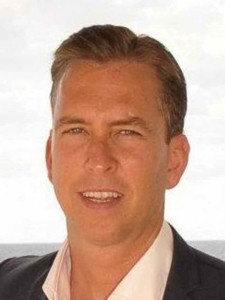
Never pass on the opportunity to look yourself in the mirror
By By David Bowcott
Construction Infrastructure Risk Management capital continuous improvement design-build risk success sustainable The primary difference between an average company and a great company is that the great company will check its ego at the door. Throughout my years, no matter the size, location, or type of work performed, the companies that excel year after year are not afraid to look in the mirror, and search for flaws. These flaws offer opportunities for continuous improvement. Great companies are not afraid to expose weakness, even if it means exposing deficiencies around aspects of their company’s culture that they have long viewed as perfect or virtuous. These companies are not only hungry for success, but they are hungry for sustainable success, and that is what makes them great.
The primary difference between an average company and a great company is that the great company will check its ego at the door. Throughout my years, no matter the size, location, or type of work performed, the companies that excel year after year are not afraid to look in the mirror, and search for flaws. These flaws offer opportunities for continuous improvement. Great companies are not afraid to expose weakness, even if it means exposing deficiencies around aspects of their company’s culture that they have long viewed as perfect or virtuous. These companies are not only hungry for success, but they are hungry for sustainable success, and that is what makes them great.
Today’s world presents many opportunities for companies that are looking for continuous improvement. Recently I worked with one of the world’s great civil contractors on a very large P3 project in the eastern United States. This was their U.S. operation’s first foray into P3s. For those that haven’t participated in a P3, in its purest form, Design-Build-Finance-Operate-Maintain, P3s have multiple opportunities for contractors to have their operations scrutinized. In these deals so much of the risk resides with the execution of the construction contract and the operations contract, and those that are financing these ventures often don’t deploy their capital unless there is extremely strong certainty around the delivery of the design-build contract and the operations and maintenance contract.
Through the RFP phase of this P3, the U.S. arm of this civil contractor proved it was a great company. Where some of their design-build joint venture partners were hoping to evade scrutiny of their operations, the people with this company invited it. To quote the project director: “I love these P3s, everywhere I turn there is somebody that is bringing in smart people whose sole objective is to tear apart my plan to build this project. It only makes me, my company and this project even stronger every time they do.”
P3s are only one example of how leading companies are testing their mettle to ensure sustainable success. There are several other “mirrors” in today’s market place, and the following are a few examples:
Management Consultants – The number of global construction clients has gone from 5 in 2005 to more than 80 in 2015. As the construction industry continues to mature globally, more and more contractors are turning to these management consultants in order to seek out the latest and greatest ways to operate their companies.
Lender Technical Advisors – With the rise of P3s in particular, the debt community has grown much more sophisticated in its scrutiny project finance opportunities and they almost always have a lender technical advisor. These advisors test project costs and schedules to provide debt with a thumbs up on the deal, and they often monitor the deal to ensure it is getting delivered on time and on schedule. (Make sure you find the ones with the most battle-scars as they will offer the greatest value to your firm.)
Insurance Companies – More sophisticated insurance covers not only require the insured to complete an application that provides the insurer key information around how your company manages risk, but these insurers also require your company be reviewed by their risk engineers. These folks are experts in the risks the insurance policy covers, therefore they possess knowledge around how to prevent and mitigate that risk. The insurer is hoping to have this risk engineer identify how good you are at managing this risk so they can rate the policy. Read the reports of these risk engineers. They are excellent mirrors for your company.
Peer Group Events – There are several events held throughout the year that allow construction companies to meet and discuss strategy with their peers. These events provide an opportunity to compare your operational practices with those of your peers.
Insurance Brokers – Your insurance broker places all of your insurance and surety lines, and if they have a significant pool of business for your industry, they should possess the ability to benchmark your insurance and surety program. Insurance carriers will only do select lines of cover and some do offer benchmarking capabilities for those lines, but with a broker you can get a holistic benchmarking inclusive of all lines. Further these brokers should aggregate best practices associated with risk mitigation and prevention for specific construction risks and thus holistically benchmark your operational practices. Once again, this works best if you have a broker that actually has a substantial pool of business in your specific sector of the construction economy.
There are many other mirrors in today’s market place, and several others in the works. Make sure you keep your eyes and ears open for these opportunities to scrutinize your company, as they are excellent opportunities to maintain your greatness.
David Bowcott is senior vice-president and national director of Large/Strategic Accounts at AON Reed Stenhouse Inc. Send comments to editor@on-sitemag.com.




